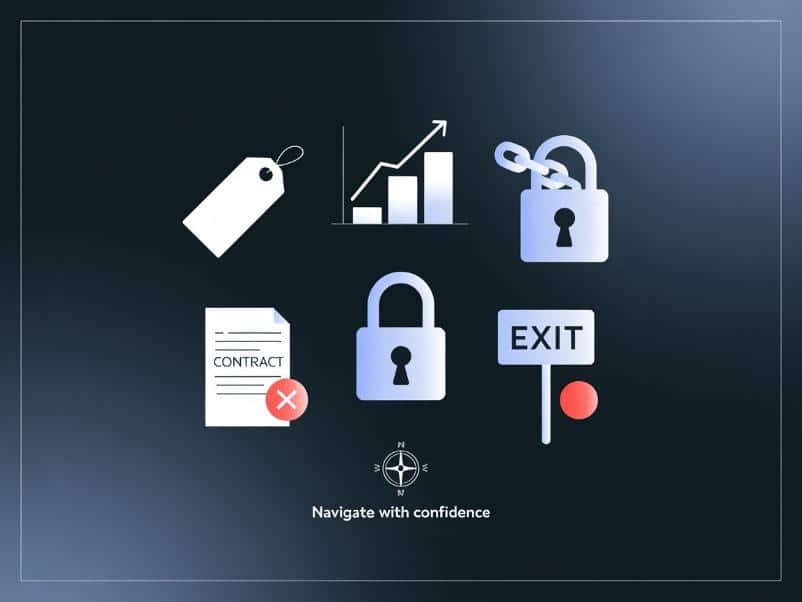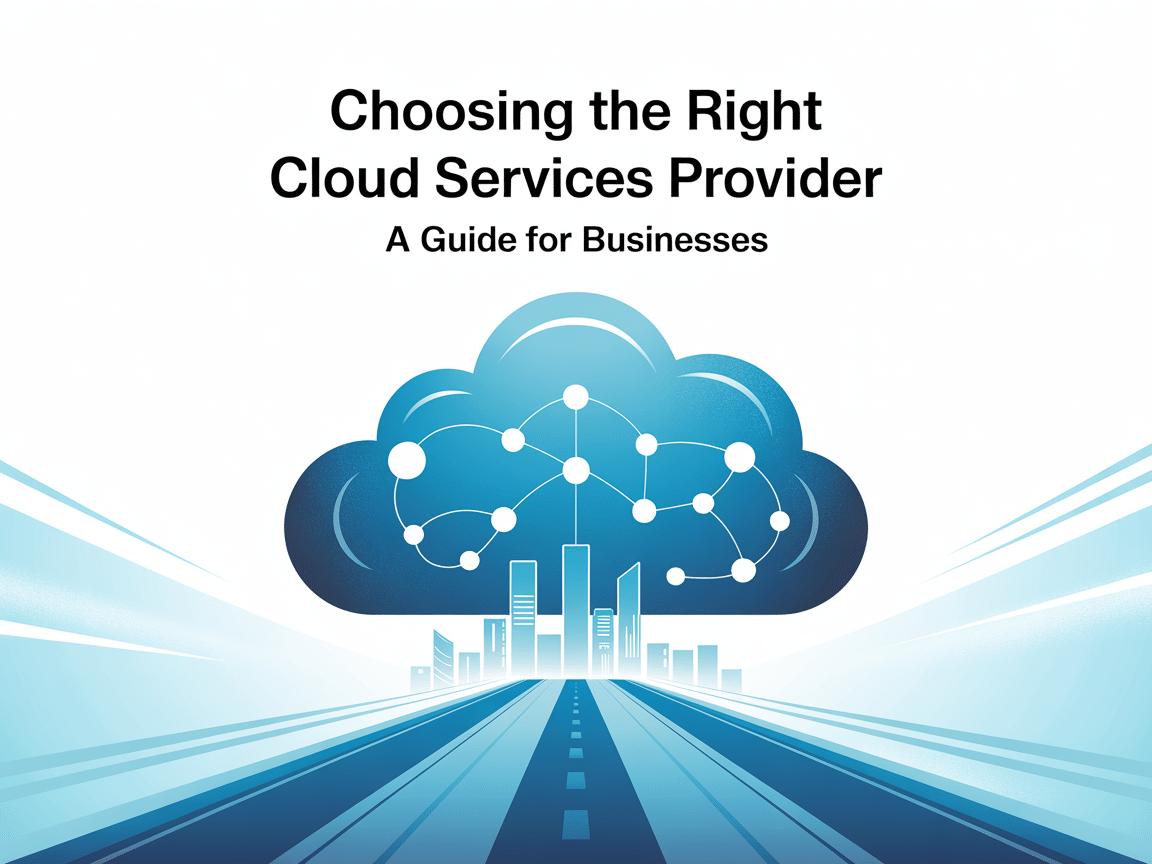Cloud services are now a must-have; they are no longer optional. With more businesses transferring their operations to the cloud, choosing the right provider has become one of the most critical decisions you will have to take. The right cloud partner will let you deliver faster, protect your data, and prepare for growth. With so many options out there, how do you choose?
This guide will help you look for what a provider must offer, ask the right questions, and avoid the pitfalls. From switching providers to taking the plunge, this blog aims to keep it simple and practical. Learning how the cloud tools differ in supporting various businesses will help you choose the right type of provider.
Why Choosing the Right Cloud Provider Matters
Your cloud provider is more than just a vendor; they are the very foundation of how your systems perform every day. A good cloud provider is going to give you excellent service, good uptime, security, and tools that match your needs. A bad one is going to slow you down and cost you more than it should.
Choosing a cloud provider impacts scaling capabilities, data protection, and collaboration among your teams. Hence, time and again, strong infrastructure cloud services and IT cloud systems form the backbone to support their decision.
Factors to Consider When Evaluating Providers
Performance and Reliability
Start with considering the uptime guarantee. A good provider will aim for 99.9% or better. That means fewer disruptions and more peace of mind for you. Speed and nearby data centers go hand in hand with performance. The nearer the servers are to your customers, the better their experience.
Scalability and Flexibility
Can the provider handle growth? Whether you are launching a new product, growing teams, or entering a new market, your cloud setup needs to grow with you. This is vital for fast-paced industries such as cloud services for gaming, where big spikes in demand can occur.
Security and Compliance
A solid provider will have integrated security measures to protect your data. Look out for encryption, multi-factor login, and periodic auditing. In case you are in the healthcare or finance domain, ensure that the provider complies with regulatory norms like HIPAA or GDPR.
Integration and Compatibility
The provider must easily integrate with what you are running today. Whether you are using Microsoft, Google, or on third-party products, there should be no need to do a complete tear-down and rebuild. Smooth integration will save you time and trouble.
Cost and Pricing Transparency
Avoid surprises. Good providers will reveal their pricing clearly without hiding additional fees. Some offer a pay-as-you-go model, which caters best to changing requirements. Do not just aim for the cheapest option but the one that offers the highest value.
Customer Support and SLAs
You want quick answers when a problem happens. Find out if the service provider offers customer support around the clock. Review service-level agreements to find out what kind of help you can expect-and when.
Popular Cloud Providers Compared Briefly
In cloud services there are different large players, each offering different things. The right provider for your business depends on which features you most need—whether flexibility, data analytics, seamless integration with existing tools, etc. Below is a quick comparison for some of the most popular options:
| Cloud Provider | Key Strengths |
| Amazon Cloud Services | Best known for its scalability and flexibility, also for having tools that can cater to the developer’s needs. |
| Google Cloud | Great at delivering cutthroat capabilities for data analytics and AI-equipped solutions with a strong coupling to its services. |
| Microsoft Azure | Best suited for businesses that already rely on Microsoft tools such as Office or Windows Server. |
Comparison among providers such as Amazon Cloud, Google Cloud, and several others would enhance your better insight and understanding of the platform that would best suit your needs.
Matching a Provider With Your Business Goals
The provider should act as an extension of your business, not the other way around. Whether you need essential tools and reliable backups or advanced solutions like custom app hosting and high scalability, the right partner will adapt to your specific goals.
Think about where you are as a business and where your business is actually set to go. For instance, if you manage several departments or teams worldwide, you might need more advanced features and stronger. If you are still trying to understand how cloud computing is different from real cloud services, you might want to clarify that first because later you’d get confused with package descriptions.
Questions to Ask Before Making a Decision
Before signing with any provider, ask:
- What’s included in the base plan?
- Is there an additional charge for bandwidth, storage, or user limits?
- How easy is it to scale up or down?
- What does migration support look like?
- What happens in outages or downtimes?
These will help guarantee that you aren’t caught short when you need your provider to match your actual needs.
Common Mistakes to Avoid
A lot of businesses rush into decisions and later regret them. Here are mistakes you will want to avoid:

- Choosing based on price only
- Discounting future growth requirements
- Overlooking security features
- Neglecting to read the SLA carefully
- Forgetting to ask about exit options if you want to switch later
Taking your time to go through these details now can save you time, money, and frustration in the future.
Emerging Trends in Cloud Services
With the evolution of technology, so also cloud services have become more innovative-sophisticated. Emerging trends such as edge computing, serverless architectures, and multiple cloud strategies revolutionize the manner in which businesses handle and approach their cloud infrastructure. For example, edge computing, in which data is processed closer to the source, reduces latency, thereby making real-time applications perform better.
Serverless architectures are increasingly popular as they enable businesses to run their applications and services without worrying about the underlying infrastructure. It reduces overheads, is efficient, and allows core business logic to be created instead of wasting time on maintenance for servers. Multi-cloud strategy has also become mainstream, whereby enterprise clouds are spread across two or more providers to improve performance and security, not to mention avoiding vendor lock-in.
These innovations reveal that cloud services are not only a technical alternative, but also a strategic business solution as well. If you keep informed about these trends, your organization can position itself to capitalize on the latest developments in cloud services.
Ready to Make the Switch?
Choosing a cloud service provider is not simply about choosing the largest name in the industry. It is all about selecting the one provider that helps to enhance your business goals, protects your data, and is there as you grow.
If your current setup seems to be slow, limited, or too expensive, now just might be that time for a change. Once the provider that meets your requirement is found, the IT-cloud services can be combined with robust infrastructural tools and a security setting to develop an ever-reliable and future-ready system.
The best part? You don’t need a big budget to get started, just a provider that fits your needs and helps you move forward.

